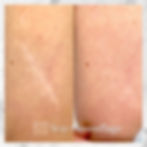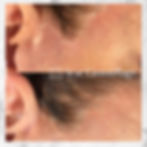
Your journey. Your healing. Your skin.
Scar camouflage is about more than aesthetics. It’s about reclaiming comfort in your skin after surgeries, injuries, or medical conditions. We use custom-blended pigments and precise techniques to soften and neutralize the look of scars, blending them with your natural skin tone.
You’ve healed. Now let your skin reflect it.
























1 hr
100 US dollars2 hr
From 550 US dollars2 hr
From 250 US dollars
BOOKING INFO - Consult Required - Service date booked at consult - Booking Deposit: $100 (added towards total cost of service) *small area: $450 for 2 sessions *medium area: $750 for 2 sessions *large area: $999 for 2 sessions
PRICING (includes 2 treatment sessions): ***Please note, size is determined by Paramedical Tattooist, below are just examples for reference*** -Small $550 (example: lipo scars, sun spots, under 6 small scar spots under 1 inch) -Medium $750 (example: breast augmentation scars, mini facelift scars, scars over 1 inch, more than 6 small scar spots) - Large $999 (example: tummy tuck scars, stretch marks, scars over 4 inches, more than 10 small scar spots)
WHO IS A GOOD CANDIDATE? - Light Scars (hypopigmented) - Dark Scars - Stable scar condition: Scars that have fully healed for at least a year and are not actively changing or prone to complications such as Vitiligo. - Skin Texture: Scars should be flat, light in color and soft. Hard scars with texture require microneedling before. - Not affected by other medical conditions that are contraindicated for general tattooing -Scars that are hypertrophic or are keloid cannot be treated with scar camouflage. - Realistic expectations: Those who understand the limitations and potential outcomes of the tattooing process. - Good overall health: Individuals in good physical and mental health to ensure proper healing. - Commitment to aftercare: Willingness to follow aftercare instructions diligently for optimal healing and results.
WHO IS NOT A GOOD CANDIDATE? - Hypertrophic (raised) or keloid scars - Purple or pink scars - Scars less than 1 year old
HOW LONG DOES SCAR CAMO LAST? Scar camouflage tattoos can last several years. The duration can vary depending on your skin tone, lifestyle, and the healing process. Protecting your tattoo from excessive sun exposure and moisturizing regularly can help extend the life of your tattoo. * Results from scar camouflage and scar needling cannot be guaranteed. Every scar is different and factors like skin type, scar age, depth, location, individual healing response, and pigment retention all affect outcomes. While many clients see visible improvement, some scars may be resistant to treatment or require multiple sessions.
COMMON TYPES OF SCARS TREATED: Surgical Scars: - Tummy tuck (abdominoplasty) - Breast augmentation or reduction - Mastectomy scars - C-section scars - Facelift scars - Orthopedic surgery scars (knee, shoulder, etc.) - Liposuction scars Trauma & Injury Scars: - Cuts and lacerations - Burns (thermal, chemical, radiation) - Accident-related scars (car, sports, workplace) Skin Conditions & Disorders: - Hypopigmented scars (white or pale scars) - Hyperpigmented scars (darkened scars) - Keloid-prone areas (note: only suitable if inactive) - Acne scarring (flat or shallow) - Stretch marks (striae) - Vitiligo (in stable areas only) Reconstructive or Medical Scars: - Skin graft sites - Gender affirming surgery scars - Mohs surgery scars - Port or PICC line sites
WHY MICRONEEDLE PRIOR TO SCAR CAMOUFLAGE? 1-3 sessions of microneedling before scar camouflage is often recommended to soften the scar tissue, reduce surrounding hyperpigmentation and best prepare the skin for micropigmentation. Microneedling itself can help blend scars requiring less application of camouflage pigment. Microneedling can also help avoid pigment migration. We may be able to start microneedling scars earlier than previously thought. According to a recently published paper in Plastic and Reconstructive Surgery entitled “Microneedling Outcomes in Early Post-Surgical Scars”, some scars may benefit from microneedling during the early maturation period of scar development. In the study, patients who underwent microneedling at the six-to-seven-week mark of wound healing saw the best outcomes overall, as compared to those who underwent the same treatment between those who waited 13 to 16 weeks. The study suggests that we may be able to start bringing people in for microneedling earlier as a more proactive way to promote quality healing.
IMPORTANT CONSIDERATIONS: - Protecting your camouflage tattoo from sun exposure is important as the camouflage tattoo will remain stable as the melanin in your healthy surrounding tissue will darken with sun exposure. - Frequent sun exposure will also fade the camouflage tattoo itself faster and you may need to have the tattoo reapplied every 1.5 to 2 years. - Matching the skin tone of someone with dark skin can be difficult and may result in a shadow effect. In some instances, topical makeup may be a better option to cover the scar. - Stretch marks with a wrinkly texture should never be treated with ink camouflage as it will make the stretch mark lines more visible. - Stretch mark tissue is delicate and prone to hyperpigmentation in individuals with darker skin tones. - Skin camouflage for vitiligo and for those with a history of melasma in the treatment area is unpredictable and results can never be guaranteeed. - Camouflage tattoo ink removal is often ineffective on scars due to damaged tissue and could result in hyperpigmentation.
THE FOLLOWING EXCLUDE YOU FROM BEING AN APPROPRIATE CANDIDATE: - Pregnancy/Lactating - History of Keloid scarring - History of easy/excessive hyperpigmentation, hypopigmentation or pigmentation disorders - Bleeding Disorders - Cancer - Currently taking antibiotics or steroids - Currently receiving chemo/radiation treatment - History of Herpes Simplex (cold sores or fever blisters) unless treated with a preventative dose of Acyclovir/Valtrex if area to be treated is prone to cold sores/fever blisters/or Herpes zosters. - Unhealthy or broken skin Inflammation - Extensive sun or tanning 2 weeks prior and 8 weeks post treatment - Accutane in the past 6 months to 1 year - Glycolic acid products, Retin-A or Renova in the last 4 weeks in area to be treated - Waxing the area to be treated in the past 7 days - Any other chemical peel in area to be treated within 8 weeks of the treatment






